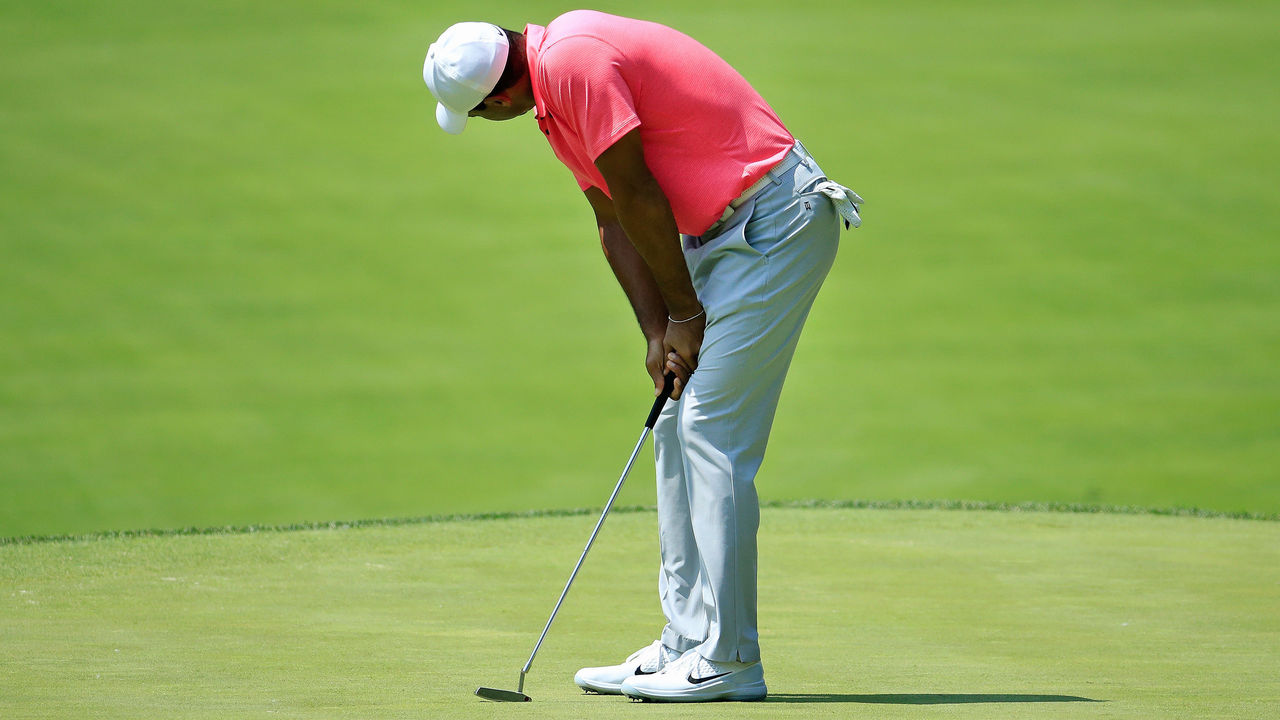Putting it together: Tiger needs to improve in key facets to compete at U.S. Open
Tiger Woods arrives at this week's U.S. Open 10 years removed from his last major championship.
In order to get over the lost decade, the 42-year-old will have to go out and find something in his game to help him contend - especially off the tee and around the greens at the demanding Shinnecock Hills.

Although he sits 12th on Tour in clubhead speed (which remains impressive for someone who had their back fused together by surgeons just over a year ago) and 26th in driving distance, he is 182nd in driving accuracy - essentially dead last.
His iron play has been precise and efficient, as he sits fourth on Tour in strokes gained: approach the green.
But, he comes to Shinnecock after the worst putting performance of his career at the Memorial Tournament. He was 72nd (out of 73 who made the cut) in strokes gained: putting for the week, and missed seven putts inside five feet (for context, he missed nine putts of that length for the entire 2006 season).

“I just didn't feel comfortable over it. I couldn't see my lines. And those greens were quick, and I just didn't feel comfortable and didn't hit many good putts. I hit a lot of bad ones,” Woods said to reporters, including ESPN's Bob Harig. “This is a different week, different setup, different grass. This is what I basically grew up on out there on the West Coast. Poa gets bumpy, and it requires a lot of patience. A lot of times you can hit great putts on poa, and it doesn't go in. The key is to hit putts solid and see what happens.”
Shinnecock is about 500 yards longer than in 2004, and although the average fairway width has increased from 26 yards to 41, the rough just off the fairway covers an entire shoe immediately when stepped on, and climbs to a golfer’s knee not much longer afterward.
It’s thick and punishing, and Woods is going to need his best driving week of the year in order to contend at the U.S. Open, not to mention a steady improvement on his putting.
“You've seen the tournaments I've played in this year. There's always something,” he said Tuesday. “There's always something that isn't quite right, and that's where we, as players, have to make adjustments.”

Somehow, however, Woods has still been able to score well this season.
He’s 10th on Tour in strokes gained: total (with a scoring average of just over 70, good for 16th on Tour) and all but two of the golfers ahead of him on that list - No. 1 and No. 2 ranked Justin Thomas and Dustin Johnson - have victories this year.
Woods’ last appearance at Shinnecock Hills - albeit on a different layout than what the players will face this week - was a pedestrian one. He never challenged the top of the leaderboard and finished tied for 17th.
14 years later, he comes into Shinnecock not as the No.1 player in the world or on the heels of an early-season victory, instead, we’re left to measure Woods on how many cuts he’s missed (only one) and how many top-25 finishes he’s had (six out of nine events, including back-to-back top 5’s in March).
In his pre-tournament press conference, Woods used the word “hopefully” four times.
He said he hoped it was one of those weeks when he was able to put it all together.
But hope will only take him so far. Skill will have to do the rest.
(Photos courtesy: Getty Images)
HEADLINES
- Bills owners explore selling minority stake in franchise
- NBA Podcast: Warriors postmortem, untimely injuries, 1st-round preview
- Conn Smythe Trophy betting: Strategizing standouts among Cup contenders
- Pirates' Chapman drops appeal, will serve 1-game suspension Friday
- NBA Eastern Conference opening-round betting preview